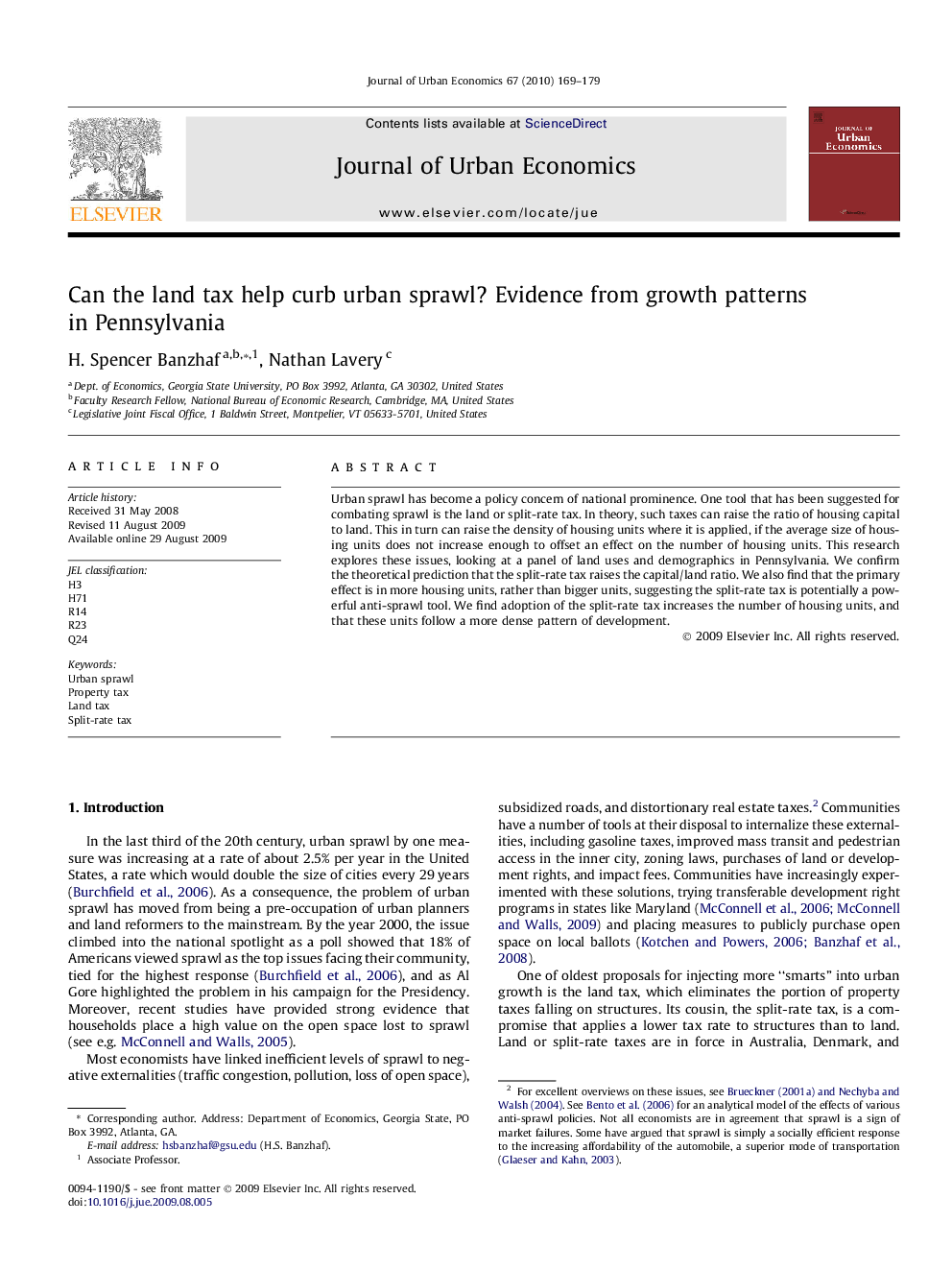| Article ID | Journal | Published Year | Pages | File Type |
|---|---|---|---|---|
| 971910 | Journal of Urban Economics | 2010 | 11 Pages |
Urban sprawl has become a policy concern of national prominence. One tool that has been suggested for combating sprawl is the land or split-rate tax. In theory, such taxes can raise the ratio of housing capital to land. This in turn can raise the density of housing units where it is applied, if the average size of housing units does not increase enough to offset an effect on the number of housing units. This research explores these issues, looking at a panel of land uses and demographics in Pennsylvania. We confirm the theoretical prediction that the split-rate tax raises the capital/land ratio. We also find that the primary effect is in more housing units, rather than bigger units, suggesting the split-rate tax is potentially a powerful anti-sprawl tool. We find adoption of the split-rate tax increases the number of housing units, and that these units follow a more dense pattern of development.
